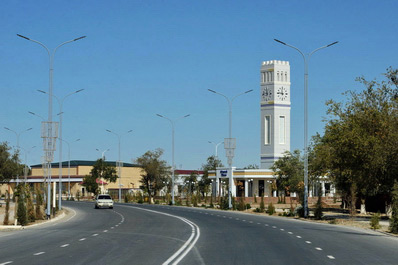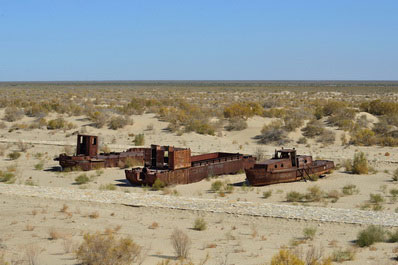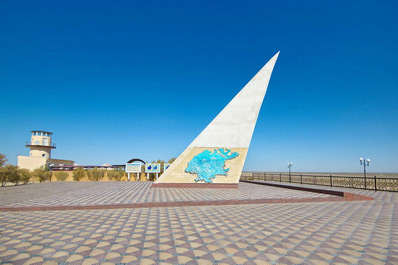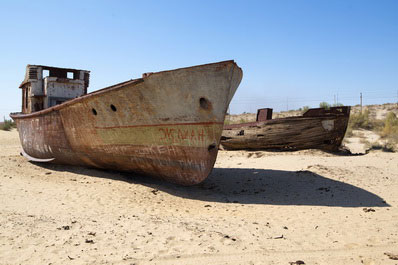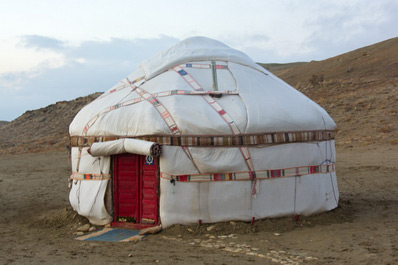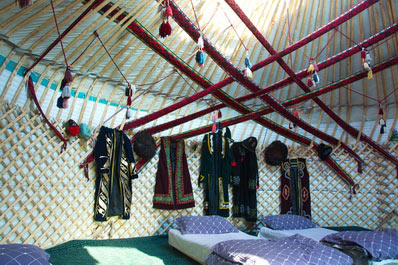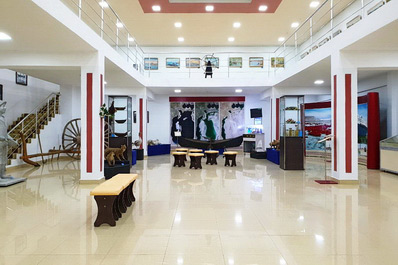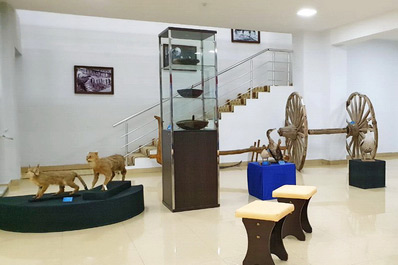Muynak Travel Guide

Altitude: 55 m above sea level
Popular languages Uzbek, Karakalpak, Russian
Time zone: UTC+5
Living nationalities: Karakalpak, Uzbek, Russian, Tatar
International telephone code: +998 61 322
Postal code: 2308XX
Automobile codes: 95-99
Muynak, once adjacent to the vast Aral Sea, now borders a desert where the sea used to be. This city, which was a significant port, is now a poignant reminder of ecological change, with its ship cemetery of rusting vessels chronicling its history. A visit to Muynak offers a deep understanding of the impact of environmental disaster on the lives and destinies of its inhabitants.
How to Get to Muynak?
The most convenient route to Muynak is from Nukus, the capital of Karakalpakstan, approximately a 3-hour journey. Air travel to Nukus is available from Tashkent and Moscow, with frequent flights from Tashkent and bi-daily from Moscow. Nukus is also accessible via train from various cities including Tashkent, Samarkand, Bukhara, Navoi, Urgench, Andijan, and Volgograd.
Is Muynak Safe?
Muynak is generally a safe place to visit. You can comfortably walk around even after dark. However, as a standard precaution, it’s advisable not to leave belongings unattended.
Brief History of Muynak
In the beginning of 20th century, Muynak was a bustling port village, thriving primarily on its fishing industry. It was so prominent that fishermen from other Soviet republics would come here to work. The town was abundant with various commercial fish species, supplying not only Uzbekistan but also other Soviet republics with canned fish.
In 1963, Muynak was officially designated as a city. It used to boast sanatoriums and rest houses, with trade and fishing ships traversing the Aral Sea. However, the gradual drying of the Aral Sea profoundly changed Muynak's landscape. The painting "The Sea Gone" by artist Rafael Matevosyan, displayed in the Muynak local history museum, vividly captures this transformation.
Today, the Aral Sea has shrunk by almost 90%, leading to the emergence of the Aralkum desert. This ecological shift has significantly impacted the health of Muynak’s residents. The city has even drawn the attention of UN Secretaries-General Ban Ki-moon and António Guterres. In 2021, the UN General Assembly declared the Priaralie area a zone of environmental innovation and technology, with Uzbekistan spearheading efforts to renew the soil and plant new forests over 2 million hectares.
From 2017 to 2022, the ship cemetery and former wharf hosted the music festival "STIKHIYA," hinting at potential future events. Additionally, a gas field was discovered in the Muinak district in 2018.
Muynak Sights& Attractions
Muynak is home to several noteworthy landmarks, including a stele resembling a sail, marking the former shoreline of the Aral Sea, and a nearby lighthouse. The well-known ship cemetery here is a somber sight, where boats left on the sandy seabed have corroded over time, serving as a stark reminder of the impact of human actions on the environment.
Visitors can experience authentic Karakalpak living by staying overnight in a yurt, a traditional portable house made from a frame and covered with felt, offering warmth in winter and coolness in summer.
The tomb of Suleyman Bakyrgani, a holy sheikh and disciple of Khoja Ahmed Yassavi, draws pilgrims. He is known for his Muslim interpretation of the Bible's Apocalypse and as the teacher of Zangi-Ata, a revered Islamic preacher in Central Asia.
The Muynak Regional Studies Museum also known as Ecological Museum of Muynak stands out for its unique exhibits that chronicle the tragic decline of the Aral Sea, once the world's fourth-largest lake. The museum also delves into the city’s history, its once-prosperous cannery, Karakalpak national clothing, historical artifacts, and artworks depicting the life of fishermen and the desolate landscape that followed the sea’s recession.
Food in Muynak
Muynak’s cuisine offers a taste of traditional Karakalpak dishes.
Try mayok-boryok, a unique dish made of dough and eggs, akin to Ukrainian vareniki, and served with Karakalpak sour-milk products.
The local version of beshbarmak, a dish of boiled dough and meat, has a distinctive flavor.
Dairy lovers should sample katikli, made from fermented sour milk.
Another local specialty is zhueri gurtik (zhugeri gurtik), a soup-like dish with dumplings made from jugar flour.
And, given its fishing heritage, Muynak’s fish dishes, like pilaf with fish, fish cutlets, and smoked fish, are a must-try.
Best Time to Visit Muynak
Visiting Muynak is best during the months of April to May and September to October. Summer trips are less advisable, as the heat can be intense and the city offers limited shade. Traveling in the colder months also poses challenges, particularly due to the likelihood of precipitation. This can make journeys around the Aral Sea area uncomfortable, as the clay roads at the bottom of the former sea bed can become quite treacherous and easily lead to vehicles getting stuck.


